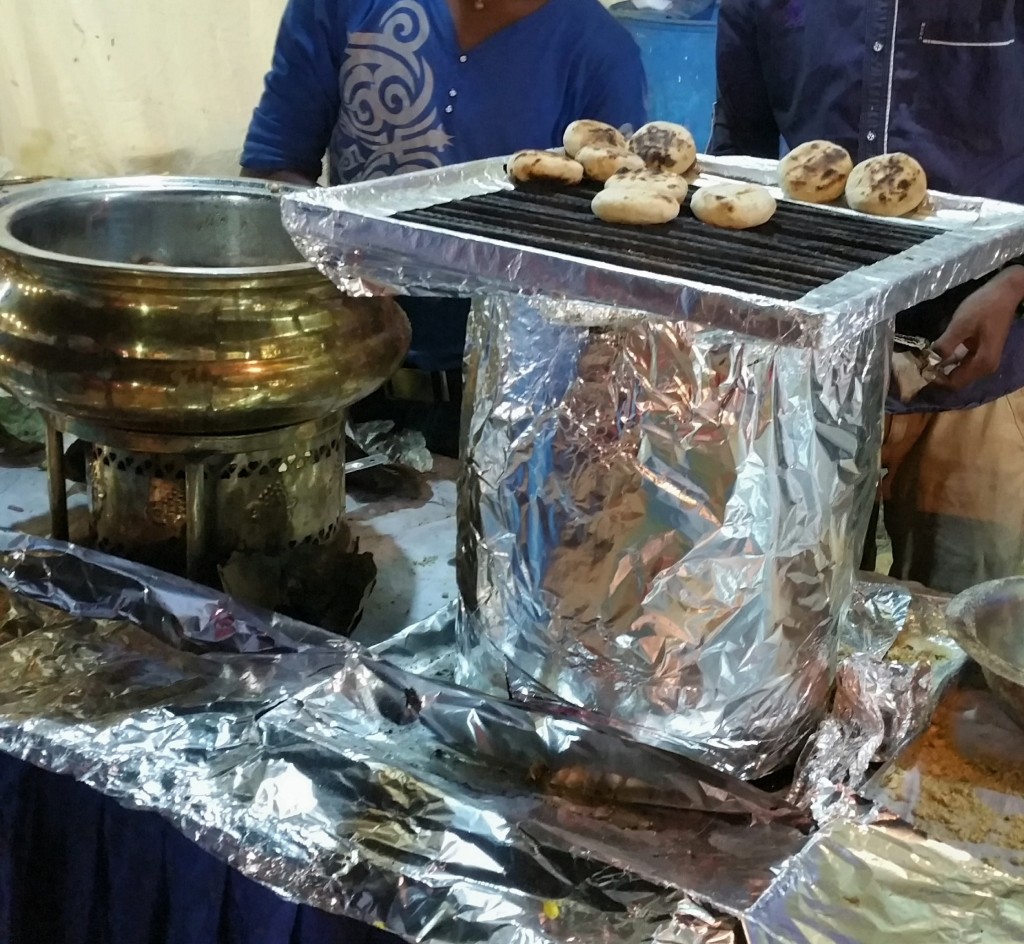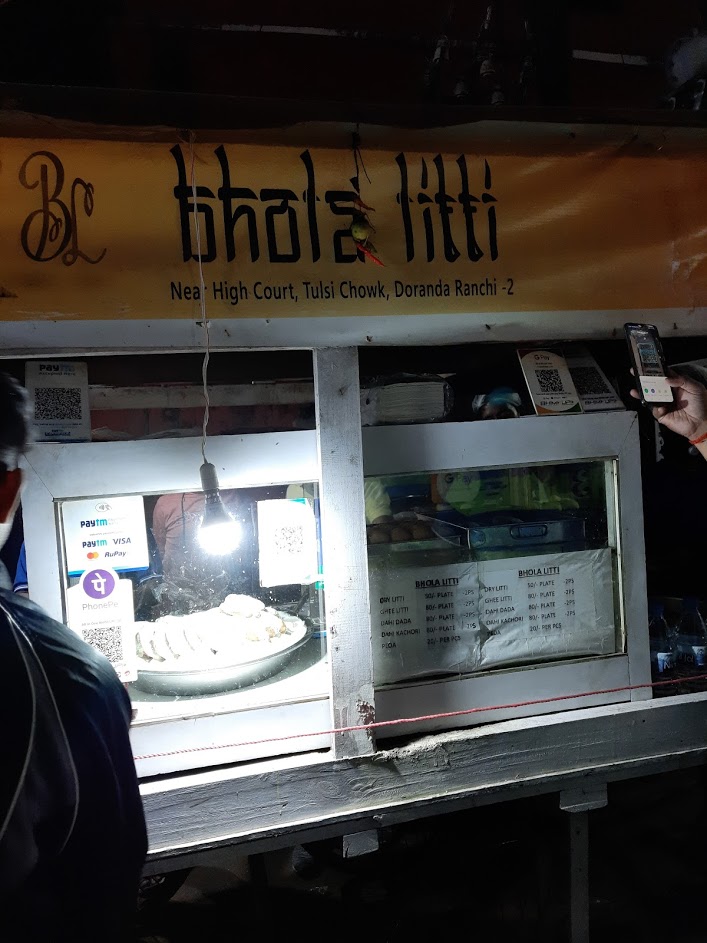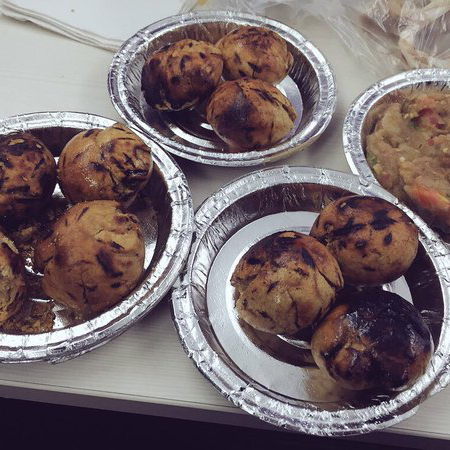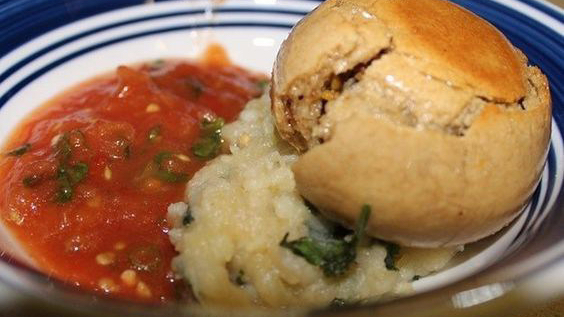Litti-Chokha is a delectable and popular dish in the cuisine of Bihar and Jharkhand. The blend of flavours and textures from the roasted litti and the tangy chokha creates a delightful culinary experience. Additionally, using whole wheat flour for litti and incorporating roasted ingredients instead of frying adds to its nutritional value, making it a healthier choice compared to some other fried dishes.
The smokiness from the charcoal-roasted litti contributes significantly to its unique taste, enhancing the overall dining experience. This dish is not only loved for its taste but also appreciated for its cultural significance and the use of locally available ingredients that reflect the region’s culinary heritage.
Today, there was a discussion on street foods with my schoolmates on WhatsApp. We remembered our good old days and found that we were all still in love with street foods. I am a street foodie. I love street foods.

When the discussion was over, I remembered another street food — Litti-Chokha. I love eating Litti Chokha. I think it is a cheap, accessible and healthy food, which provides us with proteins, carbohydrates, fibre, minerals, vitamins and everything.
Litti Chokha is not just a dish but also a cultural identity of Bihar and Jharkhand. It is a popular street food that can be found in almost every nook and corner of these states. The dish has gained popularity in other parts of India as well, and you can find Litti Chokha stalls in cities like Delhi, Mumbai, and Kolkata.
Litti shares a resemblance with the famous Rajasthani cuisine Baati except it’s spicy. Many street stalls are serving this dish in Bihar and Jharkhand. Bhola Litti, near the High Court in Doranda, is famous and quite popular in Ranchi.

The Origins of Litti & Chokha
The origins of litti and chokha are linked to historical culinary practices in the region of Bihar and Jharkhand in India. There are indeed multiple theories regarding the origins of litti and its connection to other traditional dishes like sattu paratha and pitha.
The first theory you mentioned suggests that litti might have been inspired by sattu paratha, a flatbread stuffed with roasted gram flour, which was consumed by the Magadhan army. Soldiers would prepare and bake these parathas on hot stones or cow dung cakes and pair them with chutney or pickle.
Another theory proposes that litti could have derived from pitha, a steamed or fried dumpling made of rice flour and filled with various ingredients. Pitha is still popular in the regions of Bihar and Jharkhand.
Chokha, on the other hand, is believed to have originated from the tribal communities of Jharkhand. They used to roast and mash vegetables like potatoes, eggplants, tomatoes, and onions over a wood fire. Chokha served as a simple and nutritious accompaniment to their staple foods like rice or millet. The classic combination of Litti-Chokha, which consists of roasted eggplant, onions, tomatoes, and other ingredients, along with chutney, has endured through time.
These theories suggest the rich culinary heritage and the regional influences that have contributed to the creation and evolution of dishes like litti and chokha in Bihar and Jharkhand.
The History of Litti & Chokha
Litti Chokha is believed to have originated in the Magadha region, which includes present-day Bihar and parts of Jharkhand in India. Its roots can be traced back to the ancient times of the Magadha kingdom, which existed from the 6th century BCE to the 5th century CE. However, the precise origin story of Litti Chokha may not have been explicitly documented and might have evolved over time through cultural influences and culinary practices.

As various rulers and dynasties traversed through this region, the dish likely underwent modifications, incorporating different ingredients, flavours, and cooking techniques. Historical accounts suggest that during the Mughal era, littis might have been served with payas (a type of meat stew) and shorbas (soups or broths). Later, during the colonial period when the Britishers had influence in India, variations might have emerged incorporating curry or other ingredients introduced by the British.
Over the centuries, Litti Chokha has evolved as a traditional and popular dish in the region, showcasing a blend of influences from different periods of history. The dish typically consists of roasted wheat flour balls stuffed with a mixture of roasted gram flour, spices, and sometimes other ingredients like onion, garlic, or herbs. Chokha, a side dish made primarily with roasted and mashed vegetables such as eggplant, tomatoes, and potatoes, often accompanies the littis.
While the specific historical details might not be extensively documented, the evolution of Litti Chokha likely reflects the diverse cultural influences and culinary heritage of the region over the ages.
The War Food
The historical significance of litti as a survival food during the Mutiny of 1857 (also known as the Indian Rebellion of 1857) aligns with accounts and narratives that suggest its use by soldiers and rebels during that time. Litti, along with dry Sattu Powder, became a crucial sustenance for many fighters during this period of conflict.
It’s been documented that individuals like Tantia Tope, Rani Lakshmi Bai, and other rebels relied on litti as survival food during their resistance against colonial rule. Litti’s practicality for survival lay in its ability to be baked without requiring many utensils or excessive water. This made it a convenient choice for those hiding in jungles and ravines, as it minimized the risk of being detected, and litti could also be stored for a few days without spoiling.

The historical context highlights litti’s significance not just as a traditional dish but as a practical and essential food item that played a role in the survival strategies of individuals fighting against colonial forces during a critical period in Indian history.
The Bottom Line
Litti Chokha indeed holds a significant cultural and historical value in the regions of Bihar and Jharkhand in India. Beyond its delicious taste and filling nature, it embodies the essence of these areas, showcasing their rustic and earthy flavours deeply rooted in their cultural heritage.
Litti Chokha stands as more than just a dish; it embodies the cultural richness, inclusivity, and warmth of the regions it represents, carrying centuries of tradition and history within its simple yet flavorful preparation.
This dish represents the resilience and resourcefulness of the people in these regions. Its simple yet flavorful preparation, using locally available ingredients, reflects the resourceful nature of the communities. The adaptability of the dish, being enjoyed across various social classes and backgrounds, further highlights its cultural inclusivity.


I tasted it in Delhi. There are number of shops near the Laxmi Nagar Metro Station (East Delhi). The Chokha made with Aloo (Potato) is better than the eggplant. The amount of Ghee they put on the baked ones is a killer, but tastes yummm….
LikeLiked by 1 person
Yes Aranjit, I prefer the dry baked ones.
LikeLike
Wow, that’s a new one for me. My wife makes something similar but with potato filling.
LikeLiked by 1 person
This is interesting. Something new for me. Hadn’t heard of Liti before ..even in Delhi.
LikeLiked by 1 person
Litti is very popular among Biharis. Check with your Bihari friends, they will be happy to entertain you with litti. 🙂
LikeLiked by 1 person
Sure will do. 🙂
LikeLiked by 1 person
I have seen couple of roadside vendors selling litti chokha on Main road, Ranchi but I have never tasted it. looks quite interesting. On a different note, it resembles the Rajsthani dish – Baati!
LikeLiked by 1 person
You can try it once during your next visit to Ranchi. Yes, litti resembles baati. Litti is usually taken with chokha while baati is usually taken with dal. I also like dal, baati, churma. 🙂
LikeLiked by 1 person
Sure, I will during my next visit to Ranchi. When it comes to Baati, usually there is plain, masala and mawa (sweet) versions. You can have it with Daal and apart from that you can have it with Gatte ki subzi or Aaloo pyaaz subzi. The masala ones is best eaten with daal and plain baati with gatte ki subzi.
LikeLiked by 1 person